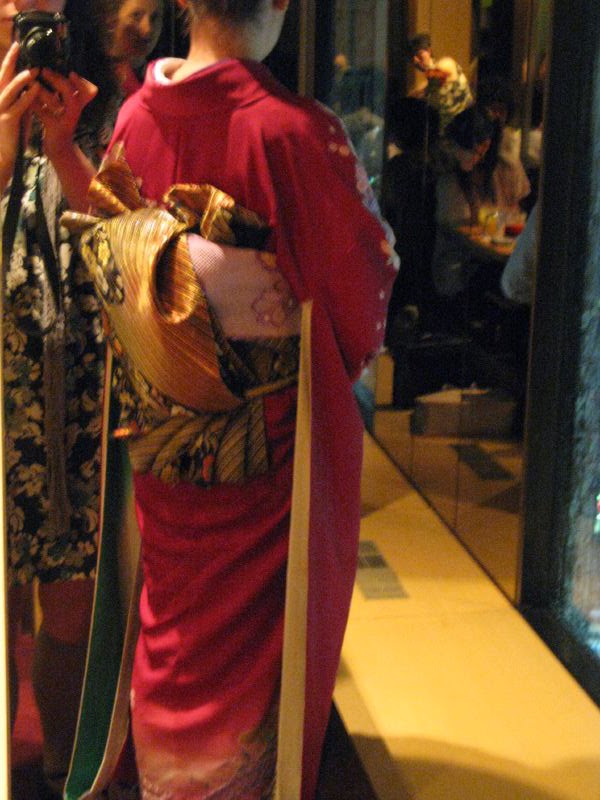I just came back from my long long day, after an entire afternoon of walking around, in Ise. My feet hurt a little, but it's a good feeling. The problem was the cold. Indeed we were blessed by the sun today, no rain at all. However, the wind is still strong and cold....colder than any other wind from my country. Nonetheless, it was a nice trip to remember.
The traditional environment it's the most interesting thing within this district, because it sets the mood for discovering new things, to look inside every house, etc.
As you can see, this is a very common view in our minds when we think about japanese houses. I have already showed you some other pictures, in previous posts, where you can see more examples, but the ones I've seen today are special because they're set within a traditional environment.
The shops, for example, are especially interesting.
Many of these are old, and the things they have as their decoration, or for sell, date back to the Meiji Era (nineteenth century). Most of these things are porcelain objects like bowls, jars, tea-cups, statues, etc, whose price can go from 200 yen (almost 2 Euros), to 30 000 yen (around 25 Euros). A friend of mine bought an Obi for 500 yen. For those who do not know, Obi is a ''must-have'' piece in a Kimono, that you tie around your waist so it holds its shape, pretty much like a belt for your pants. (see picture below)
(internet picture)
As you can imagine, Kimono's are very very expensive, rares (or not that pretty) are those who go below the 10 000 yens (74 Euros). Now, think about this: if kimono's are that expensive, and every kimono must have an Obi, how much do you think an Obi would cost?....Yeah, 500 yens is an unbeliavable low price. A pretty good deal, indeed.
It is, truly, a district with many goods that can make up for pretty good deals. We didn't have time to explore much, but I would like to go back there to check it entirely.
As with all the historical places in the world, this Kawasaki street also has a museum.
Bookcases
Old street map
Money
Pieces like these date back, extraordinarily, to the Edo period (sixteenth century), which shows how old this street really is, especially by looking at the old map.
Unfortunately, the street doesn't seem to have many people in it, like the Uji town market street, near the Naiku, but the stores exist there and, even though we might not be sure of how old they really are, most of them sell really old things. It is also possible to see a shrine in Kawasaki, something that I didn't expect, but, if we think about it, it would be pretty obvious to find one nearby, since the people need their Ujigami (Local Kami).
Anyway, I would never think about going into this street to study some museum piece, or to buy any antiquity, but, as you can see, I would lose a lot if I didn't.
I guess we can call it a street of antiquities.
This was where I spent most of my day, discovering the relics of a famous street which still holds a very traditional japanese environment. For tomorrow, there are not hints. My day will be spent in classes and I still don't know what I'm going to write about. So, there you have it my dear followers. Please wait anxiously for tomorrow's post.
Diogo here, thank you for reading and stay tuned for more!
















Sem comentários:
Enviar um comentário